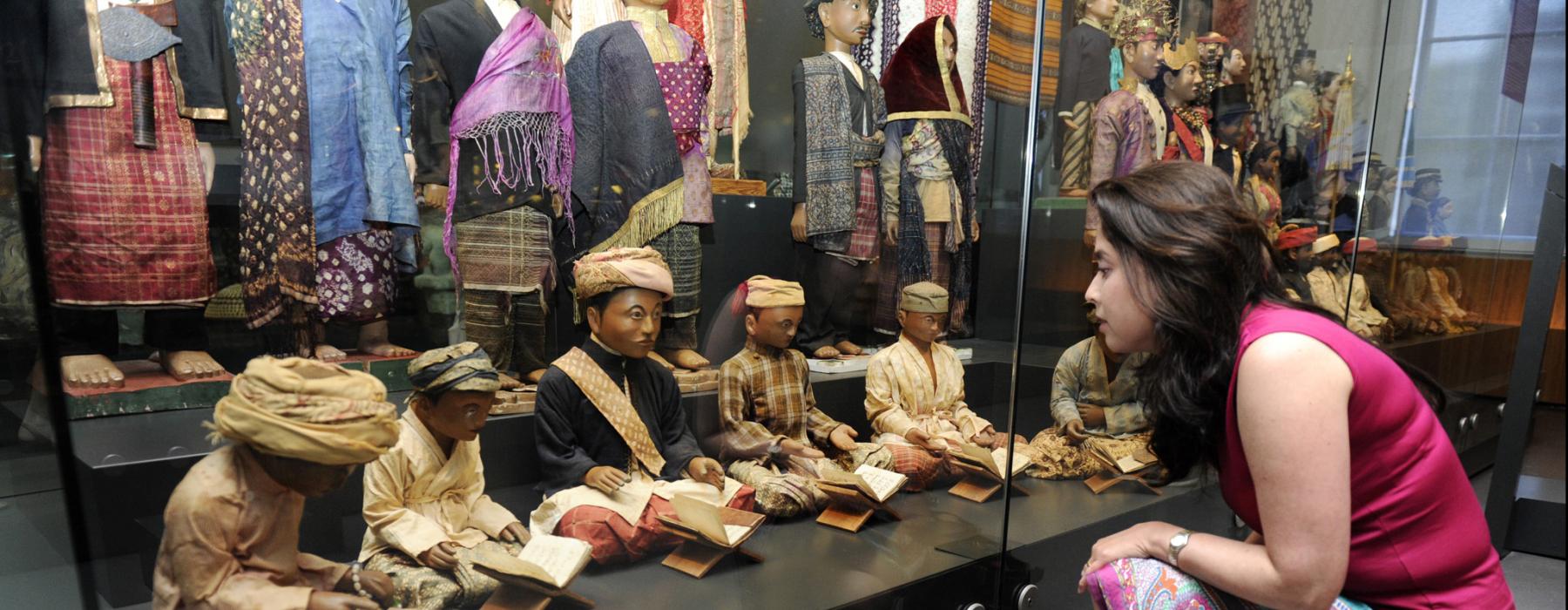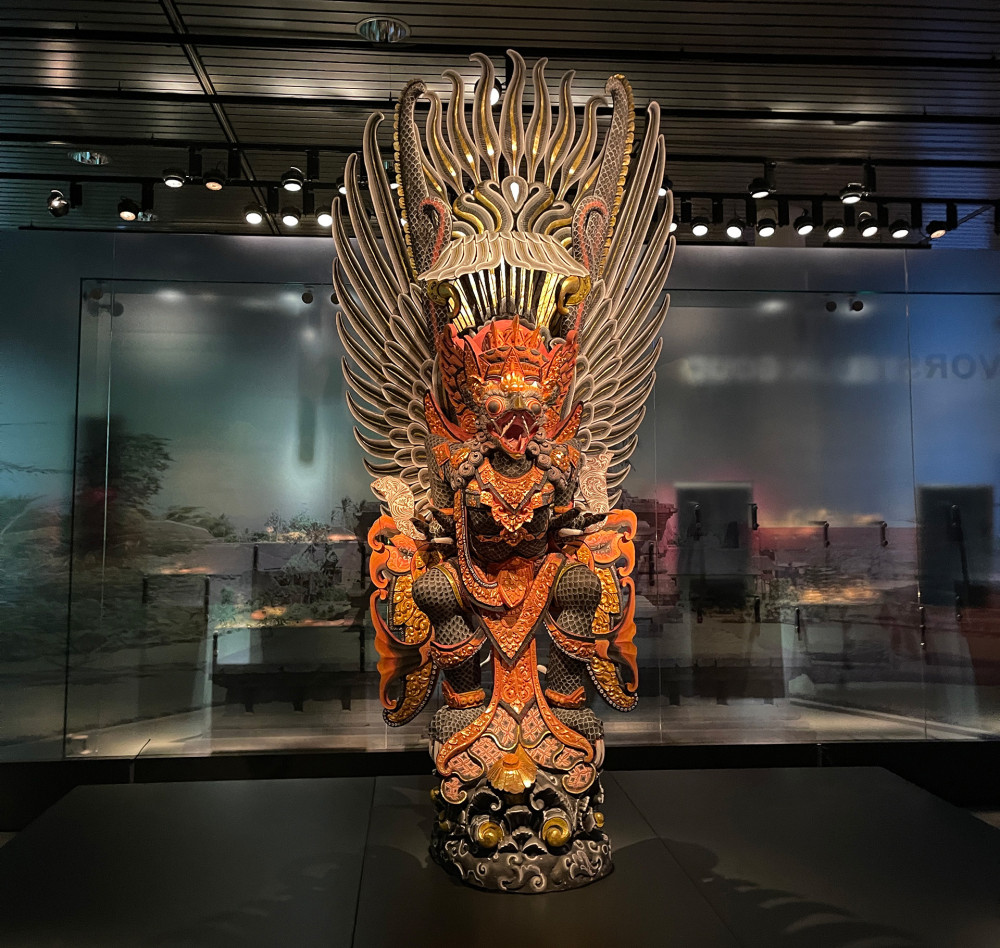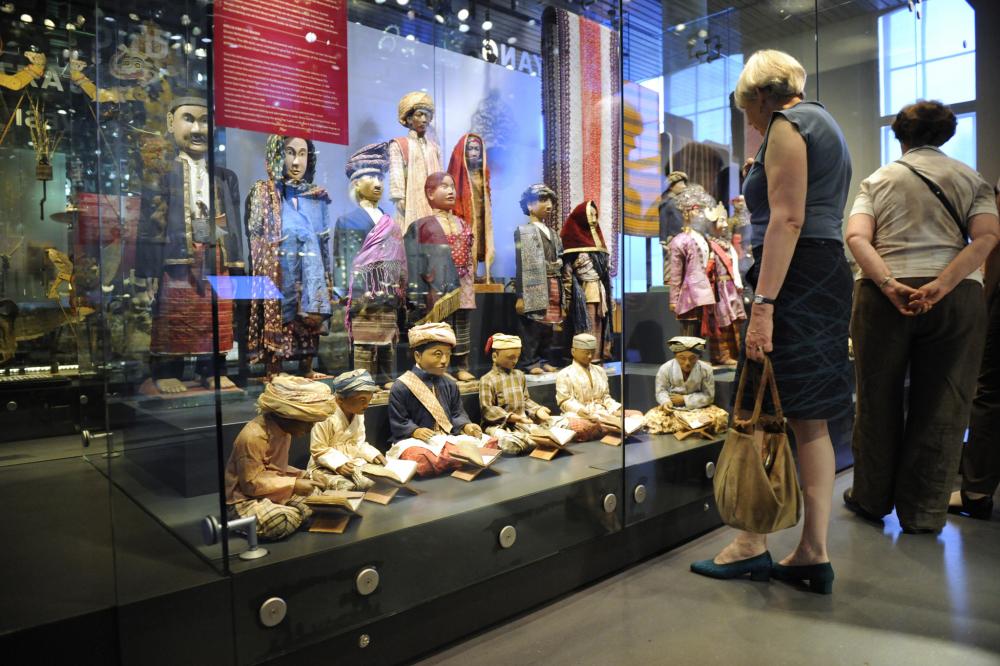
In September last year, the famous Singosari statues, originally from a temple near Singhasari in Java, were removed from Wereldmuseum Leiden and returned to the state of Indonesia. Recently, the empty space was filled in with this magnificent masterpiece: a Garuda statue. In Hinduism, Garuda is a mythical creature with physical characteristics of a human and a bird of prey. After Garuda is born, he finds out that snakes are trapping his mother. With the help of the god Vishnu, he manages to free her and, out of gratitude, Garuda becomes Vishnu's riding animal. Garuda is depicted on Balinese and Javanese shrines and objects and on the logo of the national airline of that name. Since Indonesia's independence in 1945, Garuda has been part of the national coat of arms, making the bird a symbol of Indonesia. This sculpture was probably made for a public space.

